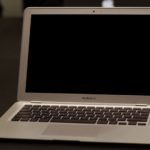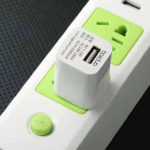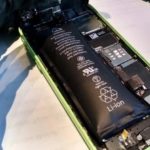Why Does My Dell Laptop Suddenly Turn Off and Won’t Turn Back On?
Dell laptops are a popular choice for many users, but they’re not immune to problems. One common issue is when a laptop suddenly turns off and won’t turn back on. There are several potential causes for this, and a few different ways to fix it.
Causes of Dell Laptop Power Failure
Faulty Charger
A faulty charger is a common cause of laptop power failure. If you plug in the charger but don’t see any lights indicating that it’s charging, then the charger may be the culprit.
Dead Battery
It’s also possible that your battery has simply run out of power. This can happen if you’ve been using your laptop for an extended period without plugging it in, or if the battery is nearing the end of its lifespan.
/fptshop.com.vn/uploads/images/tin-tuc/178954/Originals/Laptop-dell-bi-sap-nguon-2.png)
Overheating
Using your laptop for long periods of time without giving it a break can cause the cooling system to become overloaded. When this happens, the laptop may shut down automatically to prevent damage.
Faulty Display
If your laptop won’t turn on, it could be due to a problem with the display. This is especially true if you can hear the laptop running but the screen remains dark. In this case, you may need to take your laptop to a repair shop to have the display replaced.
Power Supply Failure
If the power supply to the motherboard is interrupted, your laptop will not be able to turn on. This can be caused by a variety of factors, such as a short circuit or a faulty power cable.
Hardware Failure
Hardware failure is another potential cause of laptop power failure. This can occur if the RAM or hard drive becomes damaged or incompatible. Since laptops are complex devices made up of many different components, any malfunctioning component can potentially affect the operation of the entire device.
/fptshop.com.vn/uploads/images/tin-tuc/178954/Originals/Laptop-dell-bi-sap-nguon-3.png)
Faulty High-Voltage Circuit
The high-voltage circuit is responsible for supplying power to the entire display. If this circuit becomes damaged, the display will not be able to function.
How to Fix a Dell Laptop That Won’t Turn On
If your Dell laptop won’t turn on, there are a few things you can try to fix it.
Charge the Battery
If your laptop’s battery is dead, plugging it in to charge should solve the problem. Make sure that the LED indicator light turns on when you plug in the charger, indicating that the battery is receiving power.
Press and Hold the Power Button
If you haven’t turned off your laptop in a while, or if the operating system has crashed, pressing and holding the power button for about 7 to 10 seconds may force it to shut down and restart.
Check Connections
Incorrectly connected peripherals can also cause a Dell laptop to fail to power on. Try disconnecting all peripherals, such as mice, USB drives, memory cards, and external hard drives. It’s possible that the system is set to boot from USB or a memory card, which is preventing the laptop from booting normally. Simply remove all external peripherals and restart the laptop.
Test the Display
If you’ve tried all of the above and your Dell laptop still won’t turn on, you can try testing the display. Connect your laptop to an external monitor, such as a TV. If the laptop can still connect to the external monitor, then the issue is likely with the laptop’s display and you will need to have it repaired by a qualified technician.
/fptshop.com.vn/uploads/images/tin-tuc/178954/Originals/Laptop-dell-bi-sap-nguon-4.png)
Disconnect USB Devices or Memory Cards
If your laptop starts failing to power on after you insert a USB drive or memory card, it’s possible that your system is set to boot from USB or the memory card. In this case, simply remove the USB drive or memory card and restart your laptop.
Reseat the RAM
If your laptop’s RAM becomes loose or damaged, it can cause the laptop to fail to boot. To fix this, you can remove the RAM, clean the contacts, and then reinsert it. Be sure to follow the manufacturer’s instructions for safely handling RAM.
Replace the Laptop’s Graphics Card
If your laptop’s graphics card fails, it can prevent the display from working. In this case, you will need to replace the graphics card. However, this is a complex procedure that should only be performed by a qualified technician.
Repair the Motherboard
A faulty motherboard can also prevent your Dell laptop from turning on. If you suspect that the motherboard is damaged, you will need to take your laptop to a repair shop to have it repaired or replaced.
Check the AC Adapter
You can check the AC adapter to see if it’s the cause of the problem. First, connect the AC adapter to your laptop and the power outlet. Then check if the LED light on the adapter turns on. If the light is on, then the adapter is working properly. If the light is not on, then the problem may be with the power cord or another component.
/fptshop.com.vn/uploads/images/tin-tuc/178954/Originals/Laptop-dell-bi-sap-nguon-5.png)
Get Rid of Viruses and Malware
Visiting untrustworthy websites can expose your laptop to viruses. You may also accidentally download malware without realizing it.
If your laptop is failing to turn on or boot up, it could be due to a virus or malware infection. Make sure to keep your antivirus software up to date and run regular scans. You should also enable software that prevents your computer from installing malicious or unsafe software.
Remove Conflicting Programs
Sometimes, after installing a new software program or application, it can cause conflicts with other software already installed on your laptop or with outdated driver software. This can prevent your Dell laptop from powering on.
To fix this, press the F8 key repeatedly immediately after pressing the power button to enter Safe Mode. In Safe Mode, uninstall any recently installed programs, update your drivers, and then restart your laptop.
Check the Hardware
If you’ve tried all of the above and nothing has worked, then the problem may be with a hardware component inside your laptop, such as a faulty motherboard, video card, charging circuit, or RAM. It’s also possible that static electricity has damaged a component inside your laptop, especially if you touched a component while the laptop was turned on.
/fptshop.com.vn/uploads/images/tin-tuc/178954/Originals/Laptop-dell-bi-sap-nguon-6.png)
Tips for Preventing Laptop Power Failure
To avoid power failure and keep your Dell laptop running smoothly, follow these tips:
- Use only genuine or compatible chargers designed for your laptop.
- Avoid using damaged or non-original chargers.
- Ensure that the power supply is stable when charging your laptop, and avoid sudden power outages or fluctuations.
- Regularly clean and maintain your laptop, especially the cooling system, to prevent overheating.
- When using USB drives or memory cards, be sure to remove them before restarting your laptop to avoid boot conflicts.
- Do not install software or update the operating system from untrustworthy sources.
- Regularly back up and store your important data to avoid loss in case of a laptop malfunction.
Conclusion
This article has provided comprehensive information about the reasons why a Dell laptop may suddenly turn off and won’t turn back on, including potential causes and troubleshooting steps. We hope that the information provided by FPT Shop will help you resolve your Dell laptop power failure issue.



































